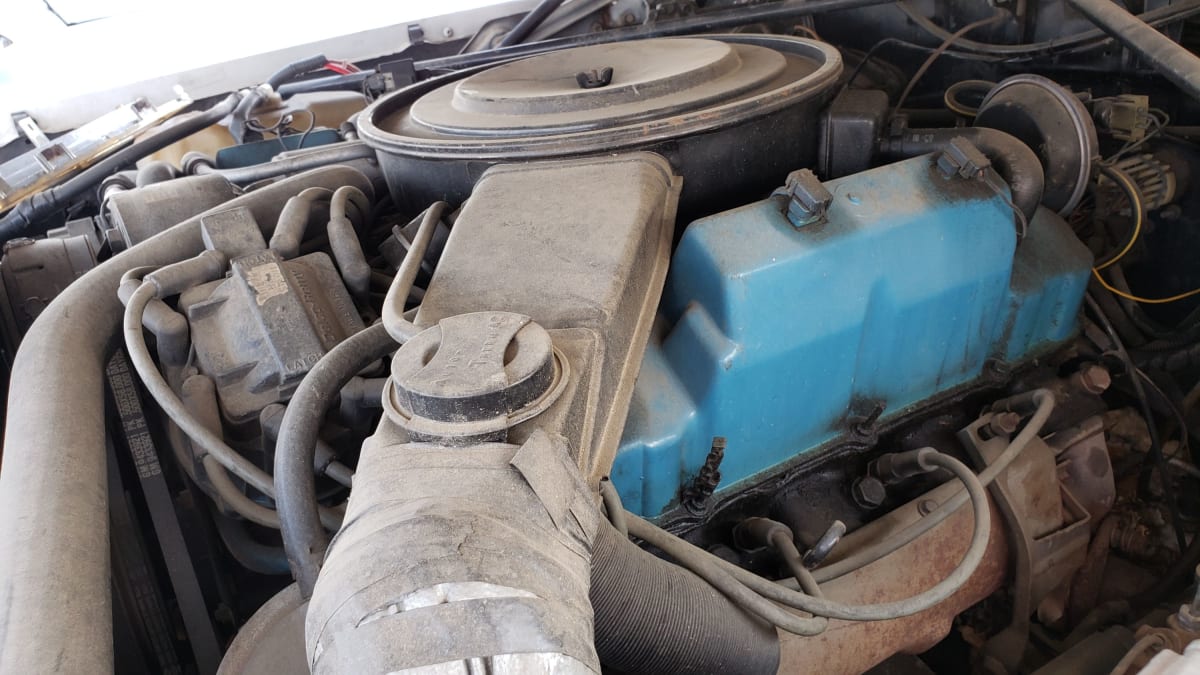Junkyard Gem: 1981 Cadillac Eldorado

Cadillac sales flew high during the second half of the 1970s, as memories of the gas lines of the 1973 Oil Crisis faded and the Chevy Nova-based Seville yielded hefty profits. Then the Iranian Revolution brought new fuel shortages in 1979, the Seville got an odd-looking bustleback and a base diesel engine for 1980, and luxury imports continued their conquests of younger well-to-do car buyers. The Eldorado had become a lot smaller for 1979, shedding a foot of wheelbase and more than a half-ton of weight; this helped Eldo sales, but problems in the engine compartment led to painful, long-term damage to the Cadillac brand. Today’s Junkyard Gem contains a piece of automotive history that the Cadillac Division would rather we forgot: the V8-6-4 engine (because sometimes the lesson of history, not the car itself, is the gem we’re describing).
The Eldorado name spent its early years living on bling-enhanced convertibles and two-door hardtops (mostly), then went onto a then-radical front-wheel-drive platform for 1967 and stayed a front-driven personal luxury car with a more or less devilish reputation until the final Eldorados were built in 2002.

The original Unified Powerplant Package (as GM named its front-wheel-drive transaxle system) went into the Eldorado and Oldsmobile Toronado and relied on sturdy chains to deliver power to the wheels. This indestructible rig proved to be one of GM’s greatest engineering triumphs (alongside the small-block Chevrolet V8 and Hydra-Matic transmission), and it proved sturdy enough to be used in gigantic motorhomes.

Unfortunately, GM’s first attempt to build a mass-produced variable-displacement engine didn’t work out so well. The V8-6-4 was a 368-cubic-inch (6.0-liter) engine, essentially a de-bored 472, with an innovative system that used computer-controlled solenoids to disengage the rocker arms opening the valves for two or four cylinders under conditions of low engine load. You can identify a V8-6-4 by looking for these distinctive valve covers with their electrical connectors.

1981 was the first model year for the V8-6-4, and it was the base engine in every Cadillac model that year except for the Seville (which had the ill-fated Oldsmobile 350 diesel as standard equipment).

Variable displacement is ho-hum technology today, working without a hitch in plenty of vehicles, but it was revolutionary stuff in 1981. Unfortunately for General Motors, computer technology of the early 1980s wasn’t quite up to the task of controlling such a system, and the V8-6-4 never worked properly. At the very moment that the Chevrolet Citation was enduring widely publicized recalls, the Cadillac V8-6-4 became notorious for flaky behavior. Cadillac extended the warranties on the affected cars and tried numerous fixes, but the best fix ended up being to disable the cylinder-deactivation system completely.

Eldorado buyers in 1981 weren’t required to take the V8-6-4, of course, but the optional powerplants weren’t particularly appealing: the troublesome Olds 350 diesel and the 125-horse 4.1-liter Buick V6.

To make matters worse for Cadillac, a thinly-disguised Chevy Citation with Cadillac Cimarron badging made its debut for the 1982 model year, cheapening the brand at the very moment that BMW and Mercedes-Benz were luring away potential Cadillac buyers by the tens of thousands. It took a long, long time for the Cadillac Division to recover from the damage caused by the V8-6-4 and Cimarron.

With a digital speedometer and “Information Center,” it appeared that the future had arrived. It turned out to have arrived just a bit too early, in the case of the V8-6-4.

This Eldorado managed to stay out of the junkyard for more than 40 years, though its faux-vertible aftermarket padded vinyl roof has seen better days.
Only your Cadillac dealer has V8-6-4.
“Grace, we’re buying a new Cadillac!”



